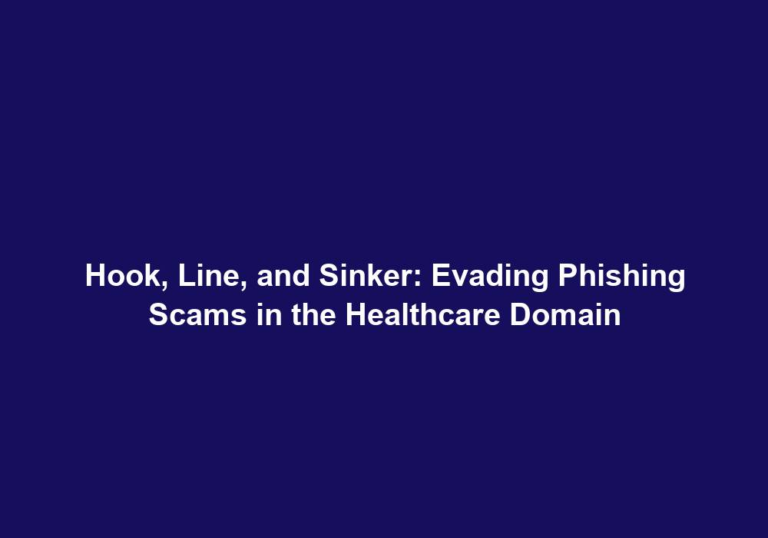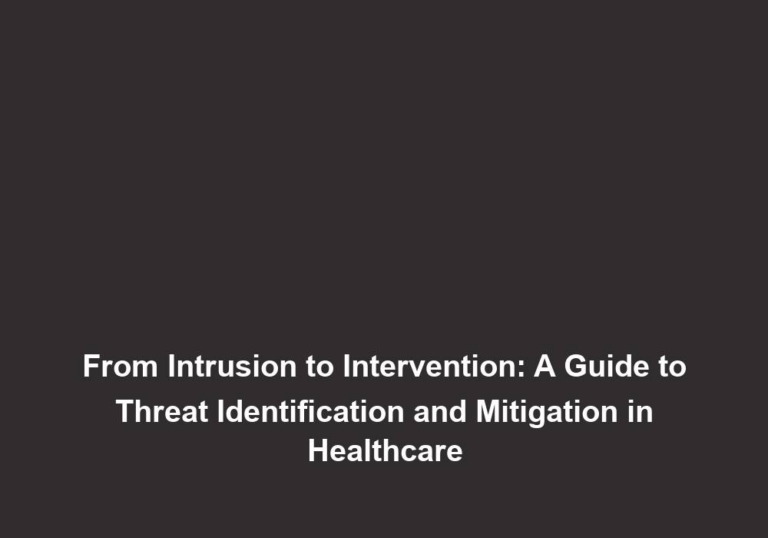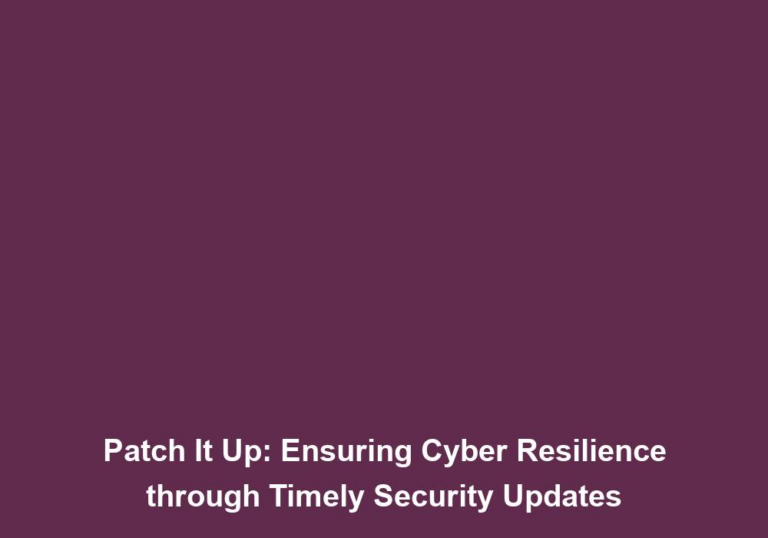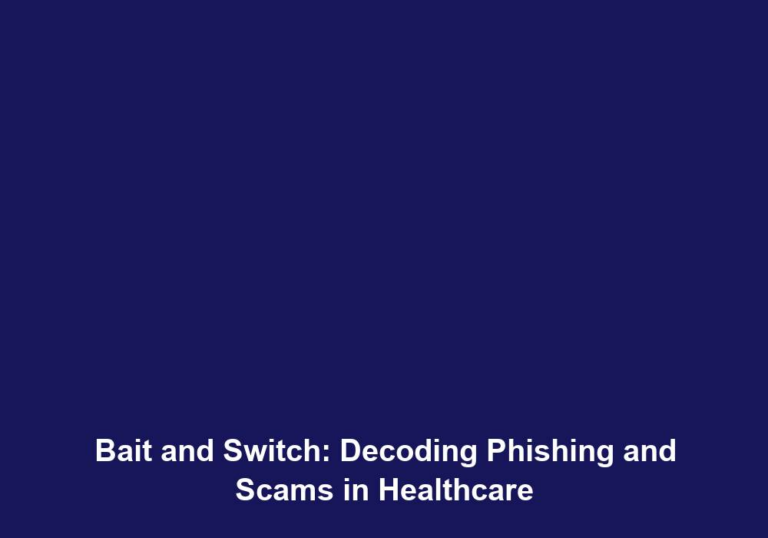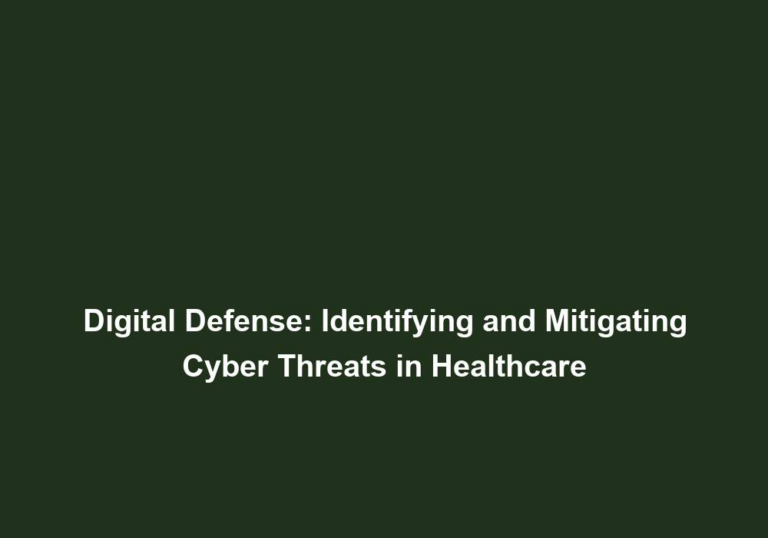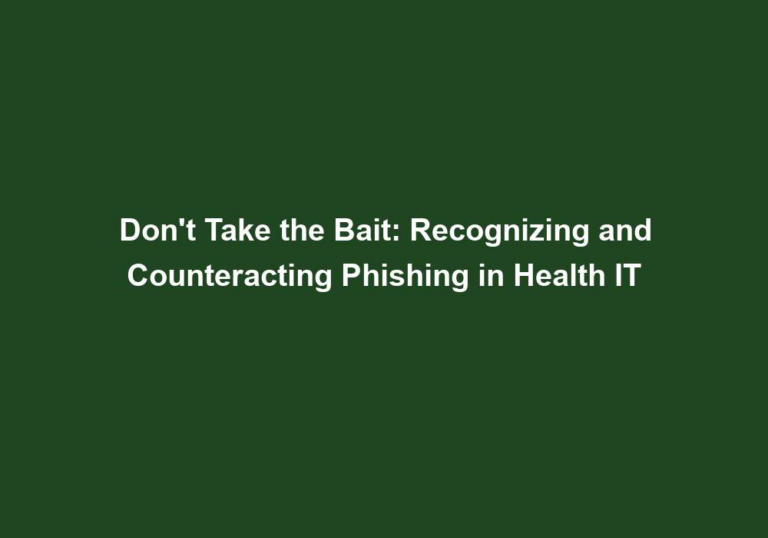Staying A Step Ahead: The Role of Security Updates in Cyber Threat Mitigation
In today’s digital landscape, where cyber threats continue to evolve and become more sophisticated, organizations must prioritize cybersecurity measures to protect their sensitive data and ensure the integrity of their systems. One crucial aspect of this defense is regularly updating security software and applications to stay one step ahead of potential threats. In this article, we will explore the importance of security updates and their role in mitigating cyber threats.
Understanding Cyber Threats
Before diving into the significance of security updates, it is vital to grasp the nature of cyber threats. Cybercriminals constantly devise new ways to exploit vulnerabilities in systems, networks, and software to gain unauthorized access, steal sensitive information, or disrupt operations. These threats can manifest in various forms, such as malware, ransomware, phishing attacks, or distributed denial-of-service (DDoS) attacks.
To effectively defend against these threats, organizations must understand their motives and methods. Cybercriminals are driven by financial gain, political motives, or simply the desire to cause chaos. They exploit vulnerabilities in software, operating systems, or network configurations to infiltrate systems and compromise data. Understanding the evolving tactics used by cybercriminals allows organizations to better prepare for and defend against potential attacks.
The Importance of Security Updates
Security updates play a vital role in mitigating cyber threats by addressing known vulnerabilities and weaknesses in software and systems. These updates are typically released by software vendors or developers to patch security flaws identified through internal and external testing. By regularly applying these updates, organizations strengthen their defenses and reduce the risk of successful cyberattacks. Here’s why security updates are crucial:
1. Patching Vulnerabilities
Security updates often include patches that fix vulnerabilities discovered in software or operating systems. Hackers are constantly searching for these weaknesses to exploit, and timely updates help close these gaps, making it significantly harder for cybercriminals to gain unauthorized access. Ignoring security updates leaves your systems exposed and vulnerable to potential attacks.
In addition to patching vulnerabilities, security updates also address software bugs and stability issues. These updates optimize the performance of software and systems, ensuring smooth operation and minimizing the risk of crashes or system failures.
2. Addressing Emerging Threats
As cyber threats continue to evolve, security updates provide a mechanism to address emerging risks and vulnerabilities. Software vendors actively monitor the threat landscape and release updates to protect against new attack vectors. By promptly installing these updates, organizations can proactively defend themselves against emerging threats before they become widespread.
Emerging threats can take various forms, such as zero-day exploits or new malware strains. Without regular security updates, organizations are more susceptible to these evolving threats. By staying up to date with the latest security patches, organizations can effectively protect themselves against emerging risks.
3. Enhancing System Performance
Aside from security enhancements, updates also improve the overall performance of software and systems. They often include bug fixes, stability improvements, and new features that enhance user experience and functionality. Regularly updating your software not only strengthens security but also ensures optimal performance and reliability.
Outdated software can be prone to performance issues, slow response times, or compatibility problems with new technologies. By keeping software up to date, organizations can take advantage of the latest improvements and ensure that their systems run smoothly and efficiently.
4. Compliance with Regulations
Many industries are subject to regulatory requirements regarding cybersecurity and data protection. Failure to apply security updates regularly can result in non-compliance, leading to severe penalties and reputational damage. By diligently updating software, organizations demonstrate their commitment to upholding industry standards and safeguarding sensitive information.
Compliance with regulations, such as the General Data Protection Regulation (GDPR) or the Payment Card Industry Data Security Standard (PCI DSS), requires organizations to implement proper security measures, including regular security updates. By adhering to these regulations, businesses not only avoid legal consequences but also establish trust with their customers by prioritizing data protection.
5. Preventing Exploitation of Known Vulnerabilities
Cybercriminals are quick to exploit known vulnerabilities that have not been patched. They often target organizations that are slow to update their software. By promptly applying security updates, businesses can significantly reduce the risk of falling victim to opportunistic attacks.
Known vulnerabilities are frequently targeted by cybercriminals because they offer a higher chance of success. By staying vigilant and keeping software up to date, organizations can effectively close these vulnerabilities and protect their systems from exploitation.
Best Practices for Security Updates
To maximize the effectiveness of security updates, organizations should follow these best practices:
1. Implementing an Automated Patch Management System
Manually updating software across numerous devices and systems can be a daunting and time-consuming task. Implementing an automated patch management system streamlines the process, ensuring that updates are deployed consistently and promptly.
Automated patch management systems can scan and identify outdated software, schedule updates, and deploy them across multiple devices simultaneously. This not only saves time and effort but also reduces the risk of human error that may occur during manual updates.
2. Prioritizing Critical Updates
Not all security updates are created equal. Some address critical vulnerabilities, while others provide minor enhancements. Organizations should prioritize critical updates and promptly apply them to minimize the risk of potential breaches.
Critical updates often address vulnerabilities that are actively exploited or have the potential to cause significant damage. By promptly applying these updates, organizations can mitigate the highest risks first and ensure the security of their systems and data.
3. Conducting Regular Vulnerability Assessments
Regularly conducting vulnerability assessments allows organizations to identify weaknesses and prioritize security updates accordingly. By understanding their systems’ vulnerabilities, businesses can proactively address potential risks and stay one step ahead of cyber threats.
Vulnerability assessments involve scanning systems and networks for known vulnerabilities, misconfigurations, or weak security controls. By performing these assessments on a regular basis, organizations can identify areas that require immediate attention and prioritize the corresponding security updates.
4. Keeping Software Up to Date
Security updates are not limited to operating systems; they also apply to applications, plugins, and firmware. It is essential to keep all software up to date to ensure comprehensive protection against potential threats.
Attackers often target third-party software and plugins as entry points to compromise systems. By regularly updating all software components, organizations close potential entry points and reduce the risk of successful attacks.
5. Educating Employees on the Importance of Updates
Employees play a crucial role in maintaining cybersecurity. Organizations should educate their workforce on the importance of security updates and establish a culture of vigilance. This includes providing training on identifying phishing attempts, avoiding suspicious downloads, and promptly applying updates.
Human error is one of the leading causes of successful cyberattacks. By educating employees about the risks associated with outdated software and the importance of timely updates, organizations empower their workforce to actively contribute to cybersecurity efforts and protect sensitive data.
Conclusion
In an ever-evolving digital landscape, organizations must stay proactive in their cybersecurity efforts. Regularly applying security updates is a critical component of an effective defense strategy, helping organizations mitigate cyber threats and safeguard their sensitive information. By prioritizing updates, implementing best practices, and fostering a culture of cyber awareness, businesses can ensure that they stay one step ahead of potential security breaches.


